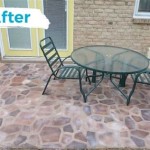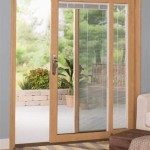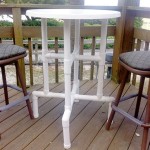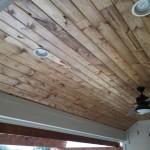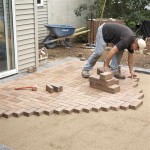Simple Outdoor Patio Designs
Creating a functional and aesthetically pleasing outdoor patio doesn't require extensive resources or complex designs. Simple patio designs can be just as impactful, offering a relaxing and inviting space for entertaining guests or enjoying quiet moments outdoors. The key lies in thoughtful planning and selecting the right materials to complement the surrounding environment and lifestyle.
Defining the Patio's Purpose
Before embarking on any patio project, defining its intended purpose is crucial. Will the patio primarily serve as a dining area, a lounge space for relaxation, or a combination of both? Understanding the patio's function will inform design choices, including size, layout, and material selection. A patio intended for large gatherings will necessitate a larger footprint than one designed for quiet contemplation. This initial step ensures that the final design meets the specific needs of the homeowner.
Choosing the Right Materials
Material selection plays a significant role in the overall aesthetic and functionality of a simple patio design. Common materials include concrete, pavers, brick, and gravel. Concrete offers a versatile and cost-effective base, easily customizable with stains or stamps to mimic more expensive materials. Pavers provide a wide array of design options with various shapes, sizes, and colors, allowing for intricate patterns and borders. Brick offers a classic and timeless appeal, while gravel provides a permeable and budget-friendly option, particularly suitable for informal settings.
Consider the surrounding landscape and architectural style of the home when choosing patio materials. A modern home might benefit from a sleek concrete patio, while a traditional home might be better suited to the warmth of brick or pavers. The local climate should also influence material selection. For example, porous materials like pavers and gravel are ideal for areas with heavy rainfall as they allow for water drainage, preventing pooling and potential damage.
Creating Zones for Different Activities
Even within a simple patio design, creating distinct zones can enhance functionality and visual appeal. Defining areas for dining, lounging, and cooking allows for a more organized and efficient use of space. This can be achieved through strategic furniture placement, the use of different paving materials, or the incorporation of vertical elements like screens or planters.
For instance, a dining area could be defined by a paved section with a dining table and chairs, while a lounge area could feature comfortable seating arranged around a fire pit or coffee table. Utilizing different paving materials, such as a contrasting border or a change in pattern, can visually separate these zones without physical barriers. This creates a sense of flow and organization, making the patio feel more spacious and purposeful.
Incorporating Greenery and Landscaping
Integrating greenery and landscaping elements softens the hardscape of the patio and creates a more inviting atmosphere. Potted plants, strategically placed shrubs, and climbing vines add visual interest and a touch of nature to the space. Consider incorporating fragrant herbs and flowers to engage the senses and create a welcoming ambiance.
Vertical gardening techniques, such as wall-mounted planters or trellises, are particularly effective in maximizing space and adding a splash of color. These elements not only enhance the aesthetic appeal but also provide shade and privacy, creating a more intimate and relaxing environment. Thoughtful landscaping can transform a simple patio into an outdoor oasis.
Furniture and Accessories
The choice of furniture and accessories completes the patio design and reflects the overall style and purpose. Durable and weather-resistant materials, such as wrought iron, teak, or synthetic wicker, are essential for outdoor furniture. Comfortable cushions and throws add a touch of coziness and invite relaxation.
Outdoor lighting, such as string lights, lanterns, or pathway lighting, enhances the ambiance and extends the usability of the patio into the evening hours. Accessorizing with outdoor rugs, decorative pillows, and other accents adds personality and creates a welcoming and personalized space.
Maintaining Simplicity in Design
While incorporating these elements, it's essential to maintain a sense of simplicity in the overall design. Avoid overcrowding the patio with too much furniture or excessive decorations. A clean and uncluttered space promotes a sense of calm and tranquility, enhancing the enjoyment of the outdoor environment. A simple, well-designed patio offers a respite from the complexities of daily life, providing a sanctuary for relaxation and connection with nature.
By focusing on functionality, thoughtful material selection, and strategic use of space, a simple patio design can provide a beautiful and inviting outdoor living area. Careful consideration of the intended purpose, integration of greenery, and appropriate furniture choices contribute to a harmonious and enjoyable outdoor experience.

50 Patio Ideas For The Backyard Of Your Dreams

51 Gorgeous Outdoor Patio Design Ideas

20 Best Patio Cover Ideas Covered Designs

Simple And Affordable Brick Patio Design Able Plan Mypatiodesign Com

24 Backyard Makeover Ideas You Ll Love Extra Space Storage
:strip_icc()/100092481-ca052c16890440868979ff49832f94b9.jpg?strip=all)
16 Patio Furniture Ideas To Make Your Backyard A Destination

Backyard Ideas On A Budget The Home Depot

Outdoor Patio Design Ideas For Your Backyard

60 Best Backyard Patio Ideas 2024

50 Best Patio Design Ideas For Outdoor And Backyard In 2024 Foyr



